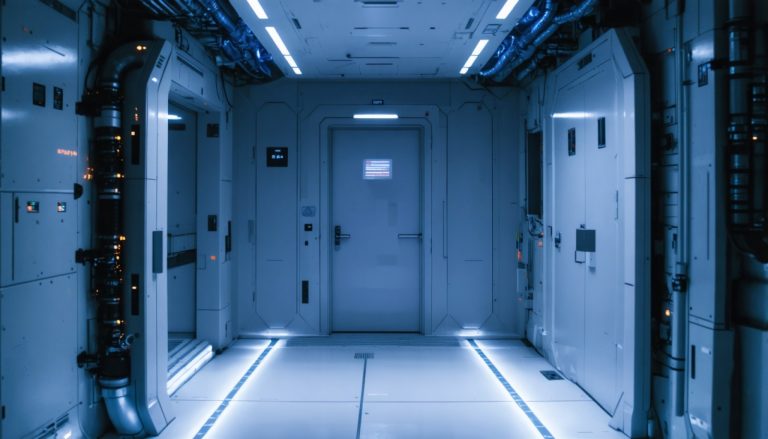
Open Cosmos, a prominent space technology firm, is set to create the satellite platform for PhotSat, a groundbreaking project led by the Institute of Space Studies of Catalonia (IEEC). This initiative marks the first owned satellite for Catalonia, specifically aimed at monitoring the 10 million brightest stars and various astrophysical phenomena. The announcement was made during the International Astronautical Congress in Milan, which runs from October 14 to 18.
PhotSat is designed to bolster a range of ongoing international space programs. Its primary focus includes searching for exoplanets, studying star characteristics, and observing transient celestial events such as supernovae. The mission will incorporate a 12U CubeSat architecture equipped with a unique astronomy payload created by the IEEC, featuring dual telescopes that will conduct sky surveys every two days in visible and ultraviolet wavelengths.
Projected for launch by the end of 2024, the satellite will be positioned at a Sun-synchronous orbit. Open Cosmos will not only build the satellite but also develop an advanced pointing system to capture detailed images of distant stars. Additionally, the company will facilitate the operations infrastructure needed for real-time data management at the IEEC’s dedicated science center.
This partnership signifies a significant achievement for both organizations, further solidifying Catalonia’s role as a burgeoning hub for space innovation and research. The mission has garnered support from the Spanish government and EU funding, reinforcing the commitment to fostering space exploration and harnessing valuable data for future scientific endeavors.
New Satellite Mission to Explore the Stars Developed in Catalonia
The development of Catalonia’s first owned satellite, PhotSat, has captured significant attention within the global space community. Spearheaded by the Institute of Space Studies of Catalonia (IEEC) and constructed by Open Cosmos, this satellite is not merely a technological venture but a pioneering leap into astrophysical research. As the initiative gears up for its planned launch in late 2024, several essential questions about its implications and challenges arise.
What are the key scientific objectives of PhotSat?
PhotSat aims to delve into the complexities of the night sky by monitoring approximately 10 million of the brightest stars. It will equip researchers with the capability to identify and analyze potential exoplanets via transit photometry, a method that observes dimming of stars caused by orbiting planets. Additionally, it will enhance studies of stellar compositions, luminosity variations, and temp celestial phenomena like gamma-ray bursts.
What are the main challenges faced by the PhotSat mission?
Several challenges loom large. Ensuring precise pointing stability for the dual telescopes is essential for capturing high-resolution images, as deviations can lead to significant data inaccuracies. Moreover, navigating the bureaucratic intricacies of international partnerships and securing ongoing funding amidst competing projects remain considerable hurdles. The satellite’s operational lifespan and potential for technological updates post-launch are also vital factors.
What are the advantages of using a CubeSat architecture for this mission?
The 12U CubeSat design is notably advantageous due to its relatively low cost, compact size, and efficient deployment capabilities. This architecture allows for rapid development and launch schedules, an essential feature in the competitive landscape of space technology. Furthermore, the use of a modular system enhances adaptability for future missions, meaning that PhotSat could lay the groundwork for subsequent explorations.
What are the potential disadvantages or controversies surrounding this type of mission?
While innovative, there are criticisms regarding the environmental impact of satellite launches and the increasing congestion in Earth’s orbit. The presence of additional satellites raises concerns about space debris management and the sustainable use of space. Additionally, there are ethical debates surrounding the prioritization of funding for space missions over pressing terrestrial issues, such as climate change and social inequalities.
What are the implications for Catalonia’s role in the broader context of space exploration?
PhotSat places Catalonia firmly on the map as a developing player in the space exploration domain. Its partnership with Open Cosmos and backing from the Spanish government and EU emphasizes the region’s commitment to scientific research and innovation. The data gleaned from this mission is expected to contribute substantially to the broader scientific community’s understanding of the universe, thereby enhancing Catalonia’s research credibility and influence.
In sum, PhotSat is not just a satellite; it is a landmark initiative that marries cutting-edge technology with ambitious scientific inquiry. As this project unfolds, it promises not only to shed light on our universe but also to navigate the complexities of modern space exploration. For more information about the mission and to follow its progress, visit IEEC.



